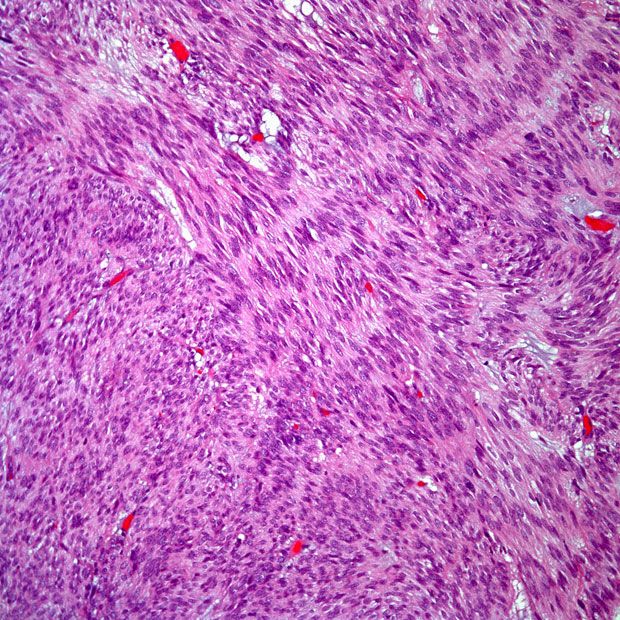Tislelizumab/Chemo Demonstrates Improved Survival in Gastric/GEJ Cancer
The safety profile of tislelizumab plus chemotherapy in the phase 3 RATIONALE 305 trial appears to be manageable in the treatment of advanced gastric or gastroesophageal junction adenocarcinoma.
Combination treatment with tislelizumab (BGB-A317) and chemotherapy resulted in superior overall survival (OS) vs chemotherapy in the treatment of patients with advanced unresectable metastatic gastric or gastroesophageal (GEJ) adenocarcinoma regardless of PD-L1 status, according to a press release on findings from the phase 3 RATIONALE 305 trial (NCT03777657).1
In the phase 3 RATIONALE 305 trial, median overall survival improved with tislelizumab plus chemotherapy compared with chemotherapy alone in the treatment of patients with advanced gastric or gastroesophageal junction adenocarcinoma.

Investigators reported that the study’s primary end point of improved OS was met.
Interim results presented at the 2023 Gastrointestinal Cancers Symposium indicated that the median OS for those with high PD-L1 expression was 17.2 months after receiving tislelizumab plus chemotherapy vs 12.6 months after receiving chemotherapy alone (Hazard ratio [HR], 0.74; 95% CI, 0.59-0.94; P = .0056). Additionally, the regimen had a manageable safety profile, with investigators identifying no new signals.
Data from the final analysis of the RATIONALE 305 trial highlighted that tislelizumab plus chemotherapy improved OS compared with chemotherapy alone in the intent-to-treat population. Investigators will submit these results for presentation at a future medical conference.
“At the recent [Gastrointestinal Cancers Symposium], we presented results from an interim analysis demonstrating a statistically significant and clinically meaningful improvement in [OS] in the high PD-L1 expression group in RATIONALE 305 and we are pleased that the final analysis demonstrated a significant survival benefit and consistent safety profile in the entire study population,” Mark Lanasa, MD, PhD, chief medical officer of Solid Tumors at BeiGene, said in the press release.
Investigators of the double-blind, placebo-controlled, global phase 2 RATIONALE 305 trial assessed the efficacy and safety of tislelizumab plus chemotherapy as first-line treatment for patients with advanced unresectable or metastatic gastric or GEJ adenocarcinoma. A total of 997 patients across 13 countries were randomly assigned 1:1 to receive 200 mg of tislelizumab intravenously on day 1 of each 21-day cycle or matched placebo followed by a chemotherapy regimen consisting of cisplatin, oxaliplatin, capecitabine, and 5-fluorouracil.
Secondary end points of the trial included progression-free survival, overall response rate, duration of response, disease control rate, clinical benefit rate, and safety.
Patients 18 years and older with histologically confirmed locally advanced unresectable or metastatic gastric or GEJ adenocarcinoma were eligible for enrollment on this trial. Additional inclusion criteria included receiving no previous systemic therapy, having an ECOG performance status of 1 or 0, and adequate organ function.
Patients who had squamous cell or undifferentiated gastric cancer, active leptomeningeal disease, or uncontrolled brain metastases were not able to enroll on the trial. Patients were also unsuitable for enrollment if they had gastric or GEJ adenocarcinoma with HER2-positive disease or received prior treatment with an anti–PD-1, anti–PD-L1, or an anti–PD-L2 agent.
China’s National Medical Products Administration approved tislelizumab as a frontline treatment for locally advanced unresectable or metastatic gastric or GEJ adenocarcinoma with high PD-L1 expression in February 2023.2 Supporting data for this approval came from the phase 3 RATIONALE trial.
The FDA is currently reviewing tislelizumab as treatment for advanced or metastatic esophageal squamous cell carcinoma following prior chemotherapy. The FDA delayed their decision on approving tislelizumab in this indication in July 2022 due to COVID-19 travel restrictions in China preventing the agency from conducting site inspections with the agent’s manufacturer.3
References
- BeiGene announces positive phase 3 tislelizumab trial in advanced gastric or gastroesophageal junction adenocarcinoma. News release. BeiGene. April 20, 2023. Accessed April 21, 2023. bit.ly/40y7L2q
- BeiGene receives 10th approval for PD-1 inhibitor tislelizumab in China. News Release. BeiGene. February 24, 2023. Accessed April 21, 2023. https://bit.ly/3SBpZ0Q
- BeiGene provides regulatory update on the U.S. biologics license application (BLA) for PD-1 inhibitor tislelizumab in 2L ESCC. News Release. BeiGene. July 14, 2022. Accessed April 21, 2023. https://bit.ly/3P9gFhU